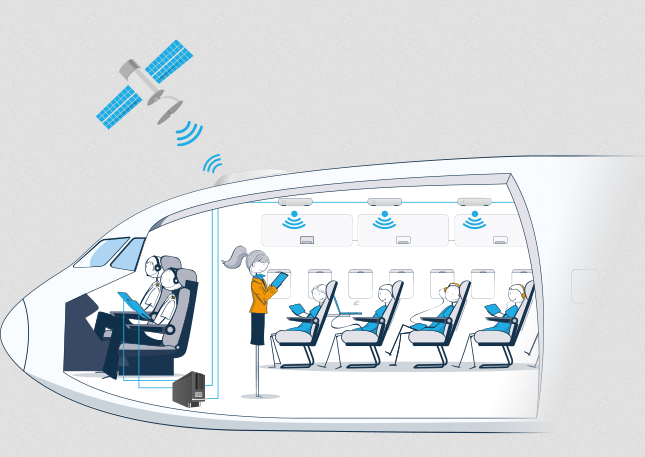 |
| ViaSat has bought aviation software company Arconics to incorporate broadband througout the aircraft. Photo: Arconics |
[Avionics Magazine 11-17-2016] In-Flight Connectivity (IFC) provider ViaSat is targeting the operational connectivity market with its recent acquisition of Dublin-based aviation software company Arconics.
The deal, announced on Nov. 15, builds on the companies’ previous relationship, which centered around tag-teaming IFE solutions, often reliant on In-Flight Connectivity (IFC) offered by ViaSat. The acquisition will look to integrate Arconics’ Wireless IFE (W-IFE), modular Electronic Flight Bag (EFB) and cabin and document management software into ViaSat’s in-flight broadband platform and grow capability throughout the plane, first in the passegner sector and then with expanding operational connectivity capabilities for pilots.
“We believe the flight ops data market is relatively untapped and with the Arconics products and expertise in-house we can better target and approach a variety of new opportunities. For example, there continues to be a movement toward the paperless cockpit with centralized EFB document management applications enabling the sharing of data across platforms. As more data flows through this paperless environment, not only will a big data pipe be needed today, but it must be ready to take on the data demands of tomorrow. Weather, turbulence, other local environmental data has become important to get into the flight crew’s hands real-time,” Don Buchman, vice president and general manager for the commercial mobility business at ViaSat, told Avionics Magazine.
By acquiring Arconics, the company can immediately expand its customer base throughout the aviation market, including new global customers such as Qatar Airways, Cathay Pacific, Aer Lingus and others. The acquisition builds in large part on ViaSat and Arconics’ previous collaborations, which targeted the Wireless In-Flight Entertainment (W-IFE) capability for passengers.
The wireless IFE solution enabled through Arconics’ W-IFE kit provides a roadmap for ViaSat to offer onboard streamed content in areas where the company does not yet offer global connectivity. This will allow an airline to continue to provide streaming IFE content to passengers’ Personal Electronic Devices (PEDs) in Wi-Fi-free areas for now, and then migrate to the full streaming program once ViaSat launches its global Ka-band service beginning next year, which aims to provide worldwide internet coverage. This service begins with ViaSat 2, slated for launch in 2017, and continues with planned back-to-back launches of ViaSat 3 and in 2019 and 2020.
“In the near-term, we see the Arconics wireless IFE kit as a complement to our in-flight internet connectivity and streaming solution. In almost every [Request for Proposal] RFP we see today, wireless IFE is either mandatory or a favorably requested option. This is a trend we cannot overlook,” Buchman said.
ViaSat will integrate in-flight connectivity services throughout the aircraft, including PaxApp and W-IFE systems, with the aim to constantly push content to the aircraft.
In the long-term, however, with the airline market pivoting its interest more toward enhancing operational capability through connected communication, enhanced weather alerting and other improvements, the acquisition will help ViaSat buoy its offering in the cockpit. Post-acquisition, ViaSat expects to also offer airlines real-time insight, control and agility of aircraft and flight data with integrated, customizable aircraft operations tools that can tap into the power of ViaSat’s coming Ka-band satellite network.
With this aim, the company will also offer an EFB platform integrated with weather, Air Traffic Control (ATC), fleet dispatch and operational support, among several other initiatives that aim to make use of real-time data.
“Airlines were initially focused on passenger experience … but airlines are now more seriously exploring the operational data side. With the amount of capacity ViaSat can deliver to each device/plane, we can enable airlines, [Maintenance, Repair and Overhaul facilities] MROs and flight operations teams to collect and translate aircraft data into real-time actionable and useful information,” Buchman said, noting that the aim is to ultimately reduce operating spend, improve safety conditions and provide better situational awareness for pilots.